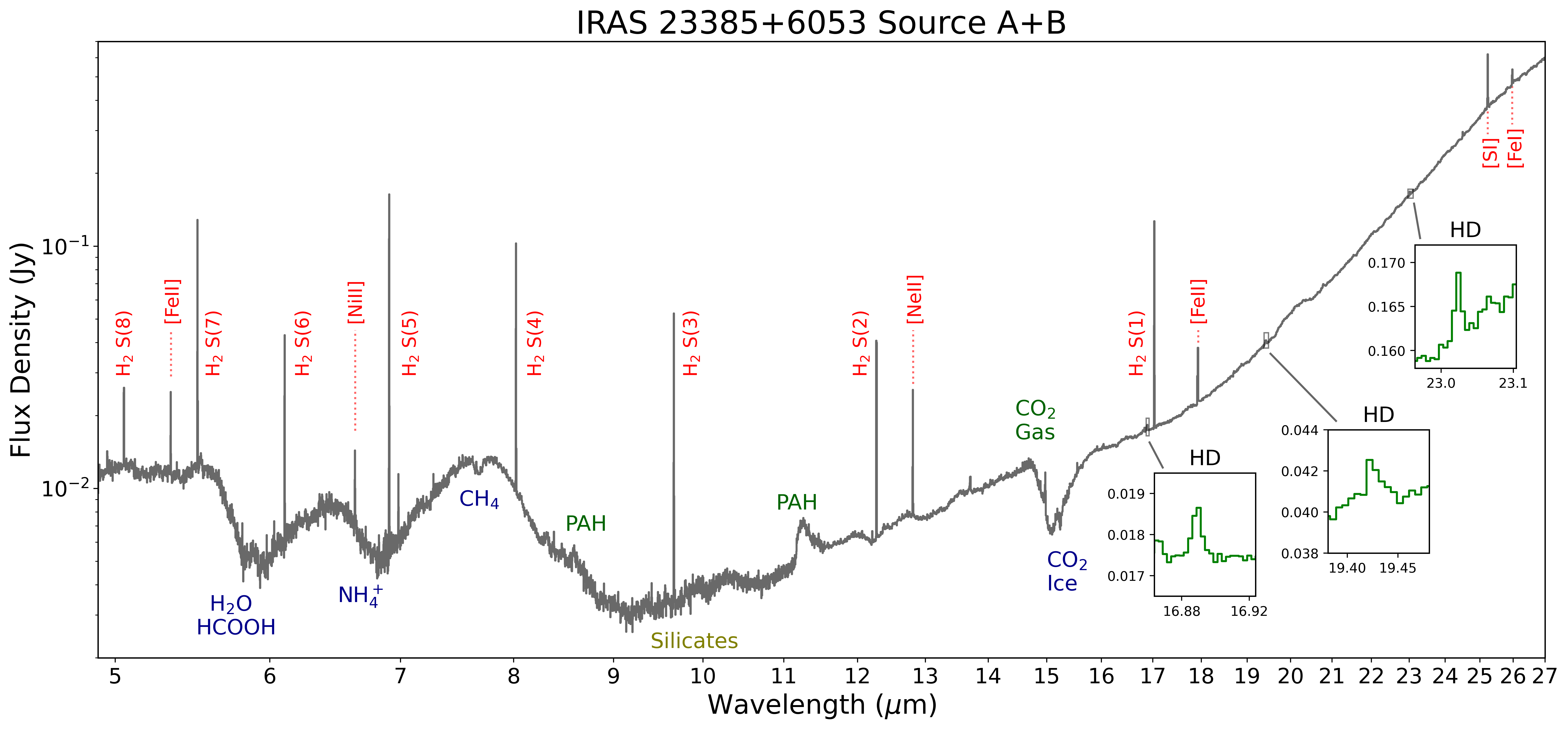Jwst Observations of Young protoStars (JOYS)
JOYS+ studies the physical characteristics of embedded disks, accretion signatures onto the protostars, feedback from the young protostars on their environment through primordial jets and outflows, as well as the chemical gas and ice constituents of the protostellar envelopes and disks. These goals are achieved with MIRI IFU spectral imaging between 5 and 28 micron, with NIRSPEC IFU data obtained for many of the sources (also through NIRSPEC GO Cycle 1 program 1960, PI: van Dishoeck) and NIRCAM imaging for the jet source HH 211. Both high- and low-mass protostars are targeted. The JOYS+ program is a combination of three MIRI guaranteed time projects (PID 1290, PI: E. F. van Dishoeck; PID 1236, PI: M. E. Ressler; PID 1257, PI: T. P. Ray) and one NIRSpec guaranteed time project (PID 1186, PI: T. P. Greene) investigating the physical and chemical properties of protostars and their immediate environment.

JOYS+ overview paper
For an overview of the JOYS+ program please see van Dishoeck et al.

Detection of semi-heavy water ice around young sunlike star
One way that astronomers trace the origin of water is through measuring its deuteration ratio. That is the fraction of water that contains one deuterium atom instead of one of the hydrogens. So instead of H2O, it’s HDO, which is also called semi-heavy water. A high fraction of semi-heavy water is a sign that the water formed in a very cold place, such as the primitive dark clouds of dust, ice, and gas from which stars are born. Astronomers at Leiden University in the Netherlands and the National Radio Astronomy Observatory in Virginia (USA) have, for the first time, robustly detected semi-heavy water ice around a young sunlike star. The results strengthen the case that some of the water in our solar system formed before our Sun and the planets.
To find out more please see the paper by Slavicinska et al. or read the press release on Astronomie.nl.
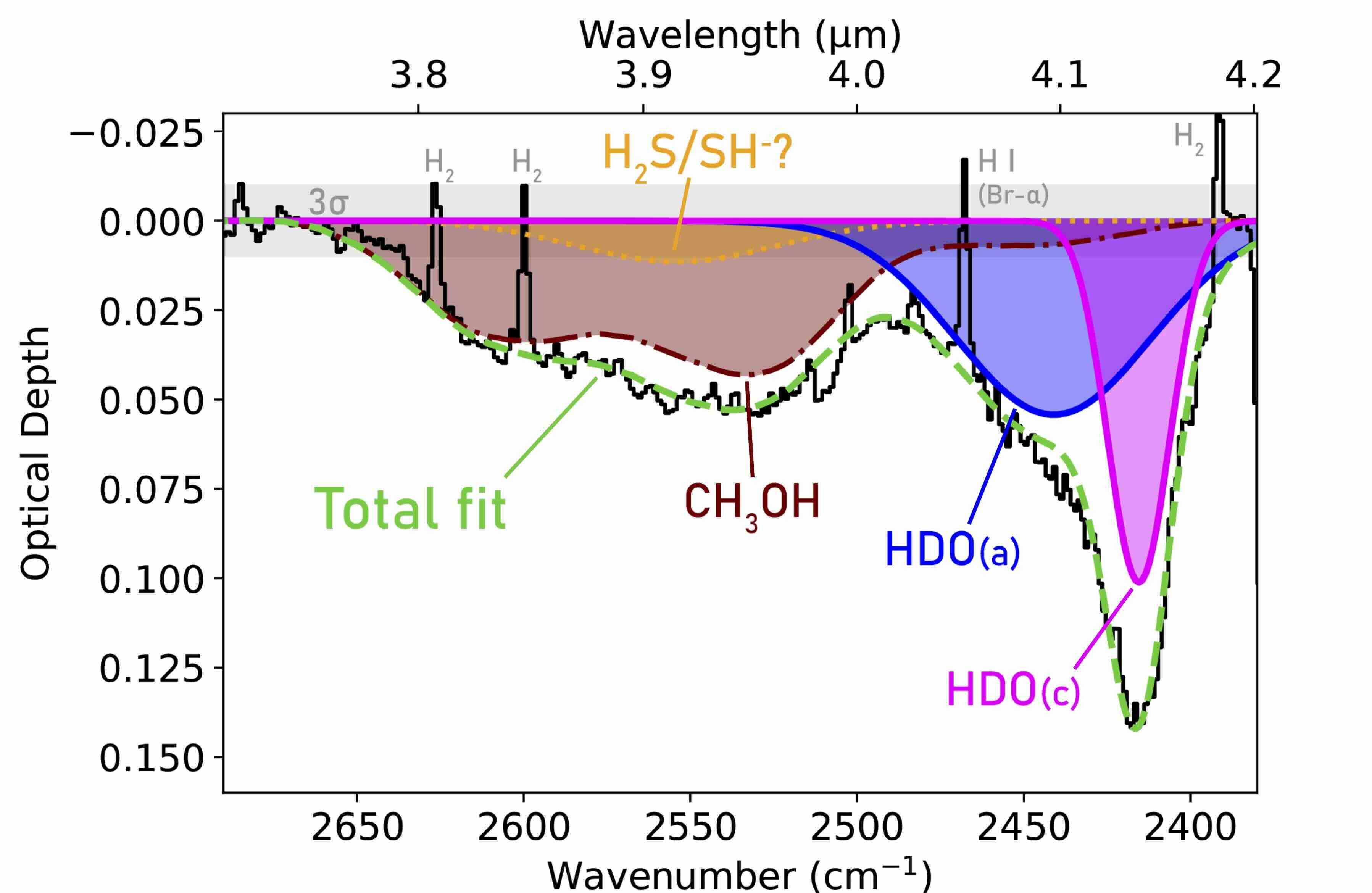
Study of solid-state 12C/13C isotope ratios in protostellar envelopes: Observations of CO and CO2 ice
The carbon isotope ratio is a powerful tool for studying the evolution of stellar systems due to its sensitivity to the local chemical environment. Recent detections of CO isotopologs in disks and exoplanet atmospheres revealed a high variability in the isotope abundance, ponting towards significant fractionation in these systems. In order to fully understand the evolution of this quantity in stellar and planetary systems, however, it is crucial to trace the isotope abundance from stellar nurseries to the time of planet formation. In this paper Brunken et al. quantifies the ice carbon isotope ratio in 17 JOYS+ protostars.
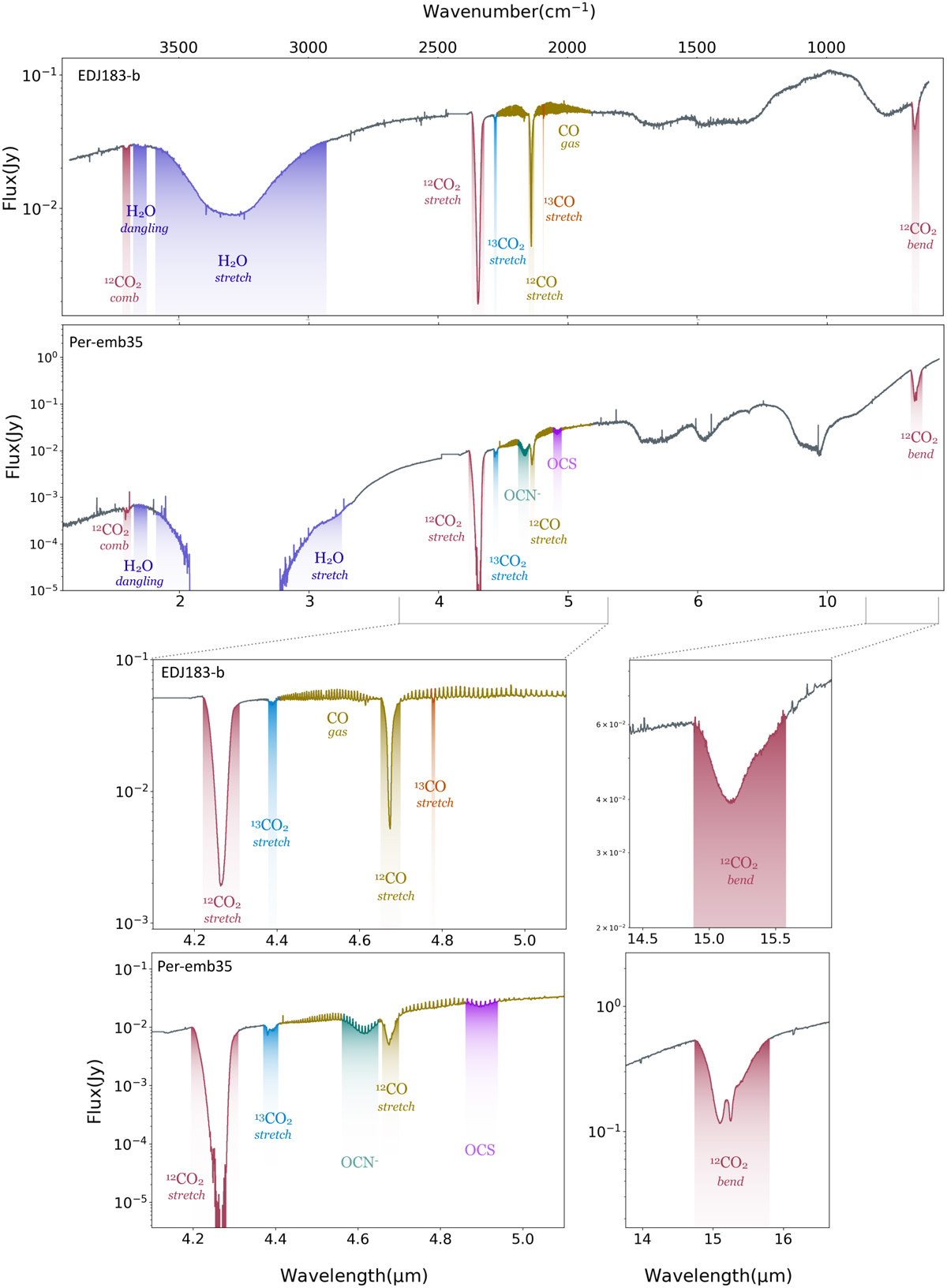
Overview of gaseous molecular emission and absorption in low-mass protostars
Molecules play a crucial role in the formation of protostellar and planetary systems. Not only is their evolution from molecular clouds to protoplanetary disks important for setting the initial composition of planetary bodies in the disks, but they also provide constraints on the physical conditions during all protostellar stages. In this overview paper van Gelder et al. provides an inventory of all the molecular lines detected in the JOYS+ protostars.
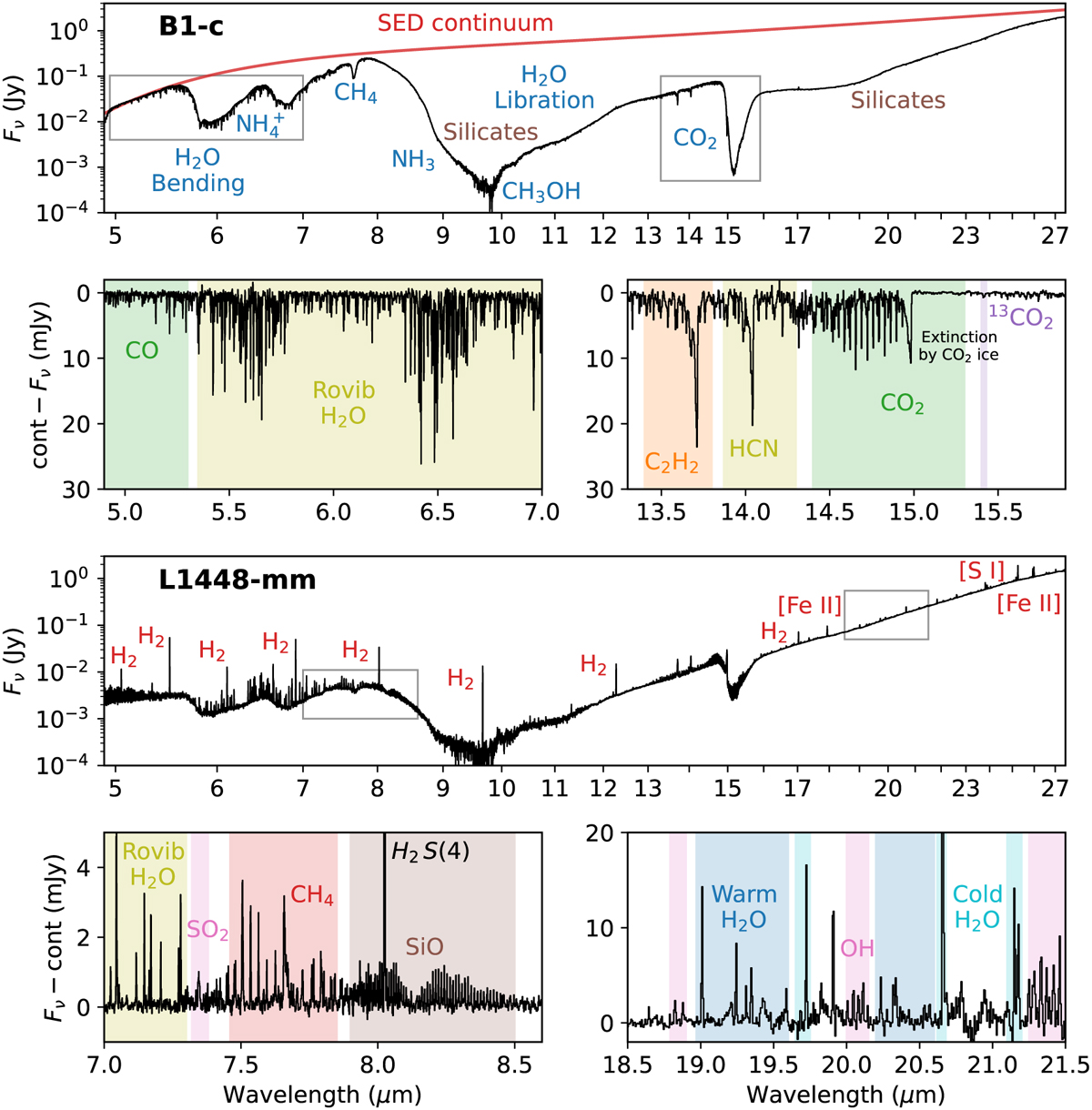
Cheers! Detection of ethanol and other complex organics in ices
Complex organic molecules have been observed in the gas phase at sub-millimeter wavelengths for several decades, but remained invisible in ices prior to JWST. With MIRI-MRS, these complex organics, including ethanol (CH3CH2OH), methyl formate (CH3OCHO), di-methyl ether (CH3OCH3), and acetaldehyde (CH3CHO), can be detected in ices and are found to be abundantly present. The abundance ratios with respect to the most simple complex organic, methanol (CH3OH), are very similar to those detected in the gas phase for species like CH3OCHO, pointing to a formation of these species in the ices. For other complex organics such as CH3CH2OH, differences between gas and ice abundances suggest that gas-phase chemistry is also contributing.
If you want to learn more about complex organic molecules in ices, please see the recent papers by Rocha et al. 2024 and Chen et al. 2024. The first detection of these complex organics was also highlighted in an ESA press release and dedicated to prof. dr. Harold Linnartz, who unexpectedly passed away in December 2023.

Mid-infrared detection of SO2 in a low-mass protostar
The protostellar binary NGC 1333 IRAS 2A in the Perseus star-forming region is one of the most famous hot cores known. The JWST/MIRI-MRS data show a wealth of spectral emission and absorption lines across the full spectrum. One particular interesting emission band is that of SO2 around 7.35 microns. MIR features of SO2 had never been detected in emission or at all toward a low-mass protostar. After a careful analysis, including a comparison to high-resolution ALMA data, the SO2 emission likely originates from the hot core rather than from any shocked regions.
For more details on the detection of SO2 with MIRI-MRS and the comparison to high-resolution ALMA data, see the recently published paper by van Gelder et al. 2024
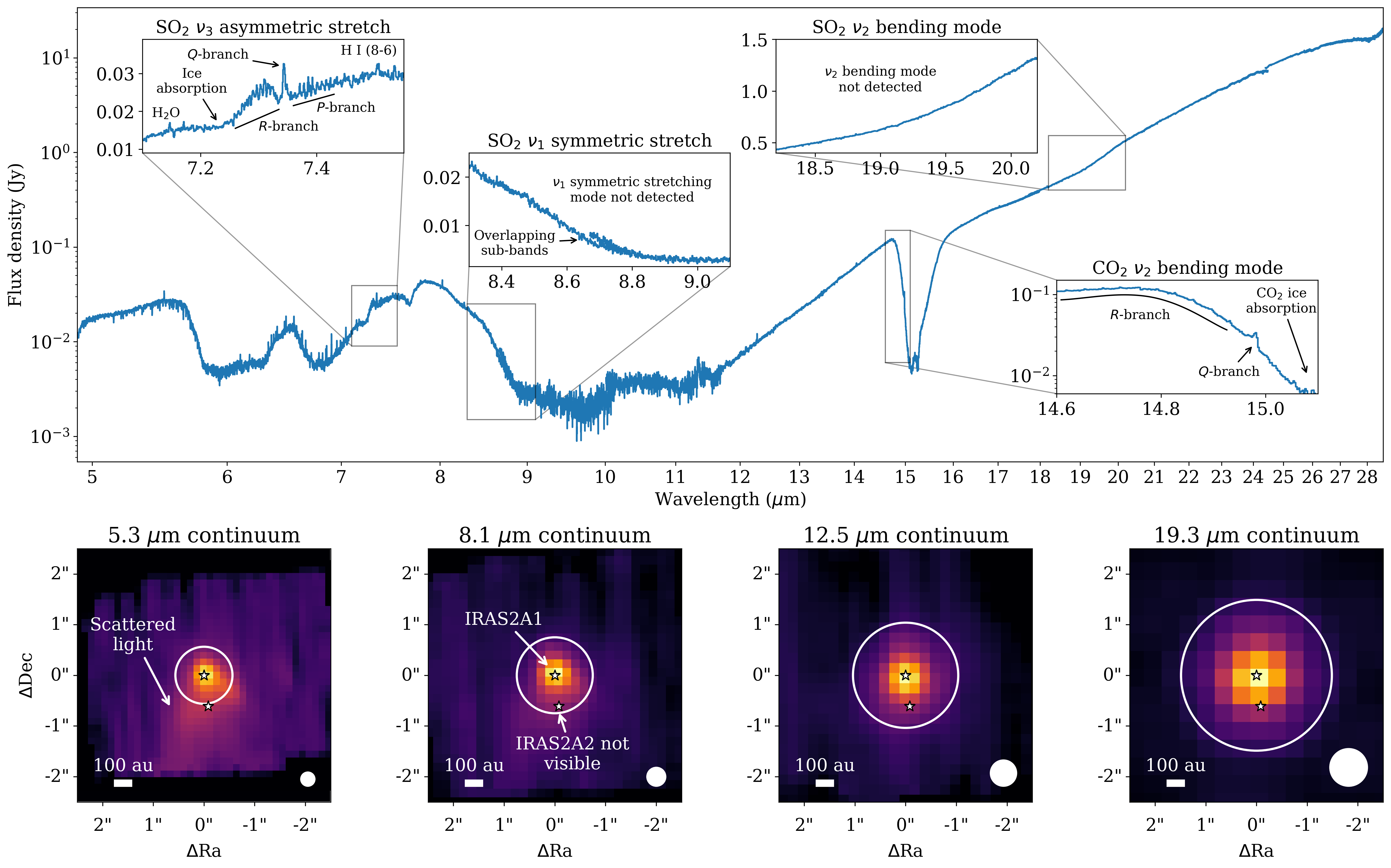
Spectacular image of the HH 211 outflow
HH 211 is one of the most famous outflows from a low-mass protostellar system located in the Perseus molecular cloud. The JWST NIRCam image is presented below, showing in absolute spectacular detail the complex outflow from this young embedded protostellar system. The NIRCam image even made it to the cover of Nature. Besides the strong bow shocks on both ends of the outflow, the image shows that the inner jet is wiggling. The protostar itself is not visible in the center due to the strong extinction. Additionally, the South East bow shock was also observed with the NIRSpec IFU, showing a wealth of H2 and CO ro-vibrational lines. The full South Eastern flow is also mapped with the MIRI-MRS, which will follow in a subsequent publication.
For more details, including the analysis of the NIRSpec data on the South Eastern bow shock, see the recently published Nature paper: Ray et al. 2023. The press release of NASA can be found here.
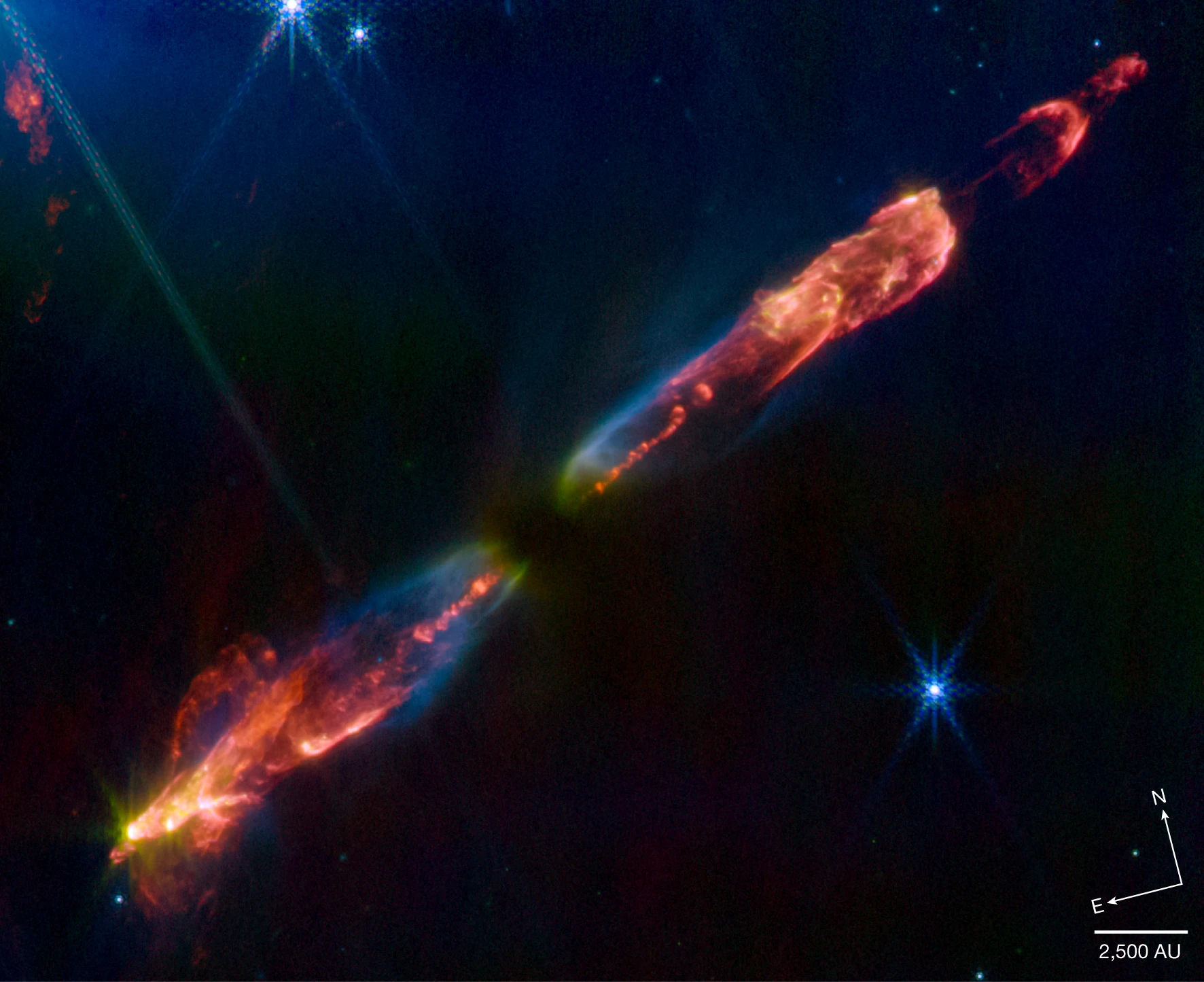
First results on the high-mass protostellar system IRAS23385+6053
A spectrum covering the full MIRI-MRS wavelength range is presented below for the high-mass protostellar system IRAS23385+6053. At the shortest MIRI wavelengths (~5 micron), two IR sources are identified. At longer wavelengths (>16 micron), the two sources are no longer resolved. In the spectrum below, several strong emission features, originating from H2 and atomic species such as Sulfur and Iron, are labeled in red. Several molecular emission features are also indicated, most notably HD, CO2, and PAHs. Furthermore, strong ice absorption bands are present such as H2O and CO2, as well as a deep silicate absorption band.
For more details, see the first JOYS papers on this source: Beuther et al. 2023 and Gieser et al. 2023.
